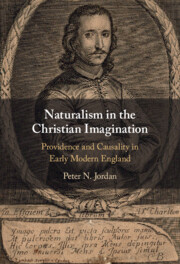Book contents
- Naturalism in the Christian Imagination
- Reviews
- Naturalism in the Christian Imagination
- Copyright page
- Dedication
- Contents
- Acknowledgements
- Part I Setting the Scene
- Part II Expanding the Explanatory Scope of Natural Causality
- Part III Curtailing the Explanatory Ambitions of Naturalistic Philosophies
- Part IV Conclusion
- Chapter 7 Explanation after Science and Religion
- Bibliography
- Index
Chapter 7 - Explanation after Science and Religion
from Part IV - Conclusion
Published online by Cambridge University Press: 30 June 2022
- Naturalism in the Christian Imagination
- Reviews
- Naturalism in the Christian Imagination
- Copyright page
- Dedication
- Contents
- Acknowledgements
- Part I Setting the Scene
- Part II Expanding the Explanatory Scope of Natural Causality
- Part III Curtailing the Explanatory Ambitions of Naturalistic Philosophies
- Part IV Conclusion
- Chapter 7 Explanation after Science and Religion
- Bibliography
- Index
Summary
Chapters 3 through 6 examine what selected early modern providential naturalisms looked like on the ground. Each of those chapters concludes with some observations about the providential naturalism framework analysed in that chapter, and some questions about implementing those frameworks in general, that arise from these scenarios. Those observations and questions are ones that emerge either directly (through an author’s explicit discussion of them), or indirectly (because an author’s treatment of an issue prompts them). This concluding chapter of the book draws these together to better understand what might be involved in being a providential naturalist today. It identifies some of the key theological ideas, assumptions, and judgements involved in providential naturalisms, as well as some significant challenges and complexities that providential naturalists in any time and place will likely need to navigate. In terms of the latter, it draws attention specifically to three areas of concern: the boundary between the natural and the miraculous; the communicative qualities of nature; and the implications of naturalistic explanation for how to live one’s life.
- Type
- Chapter
- Information
- Naturalism in the Christian ImaginationProvidence and Causality in Early Modern England, pp. 181 - 197Publisher: Cambridge University PressPrint publication year: 2022

